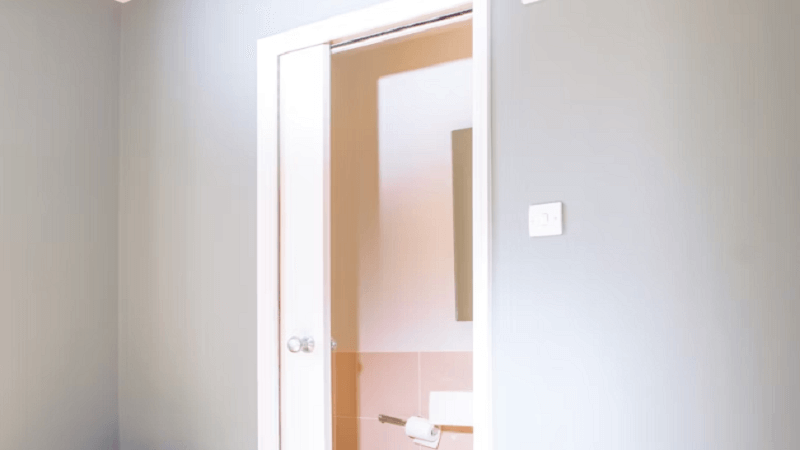When it comes to choosing the perfect bathroom door, homeowners, builders, and designers often find themselves debating between WPC bathroom doors and PVC doors. Both materials offer durability, water resistance, and affordability—qualities that are essential for bathroom environments. However, there are important differences between the two that can significantly impact aesthetics, performance, and long-term value.
In this detailed comparison, we’ll explore how WPC bathroom doors stack up against PVC doors, examining their material composition, performance, design flexibility, and maintenance needs.
Understanding the Materials: What Are WPC and PVC?
Before diving into the comparison, it’s important to understand what each material is made of.
What Is WPC?
WPC stands for Wood Plastic Composite, a material created by combining wood fibers with thermoplastics such as PVC, PE, or PP. This fusion results in a hybrid material that retains the natural appearance and texture of wood while benefiting from the waterproof and termite-resistant properties of plastic.
WPC bathroom doors are known for their strength, environmental friendliness, and ability to mimic the luxurious appeal of wood without its maintenance drawbacks.
What Is PVC?
PVC, or Polyvinyl Chloride, is a synthetic plastic polymer widely used in piping, window frames, and doors. PVC doors are lightweight, affordable, and water-resistant, making them a popular choice for budget-conscious projects. However, PVC tends to lack the structural strength and natural feel of composite materials like WPC.
Durability and Strength: WPC Takes the Lead
Bathrooms are high-moisture environments, and door durability plays a major role in ensuring long-term performance.
WPC bathroom doors are denser and stronger than PVC doors, providing better resistance to impact, warping, and cracking. The wood fibers in WPC enhance structural integrity, while the plastic component ensures complete protection against moisture and humidity.
On the other hand, PVC doors—though resistant to water—can warp or bend over time when exposed to heat. Their hollow-core design makes them less sturdy, especially in high-traffic areas or commercial spaces.
In terms of lifespan, WPC doors can last for decades with minimal maintenance, while PVC doors may show signs of aging and discoloration within a few years.
Water and Termite Resistance: Both Perform Well—but WPC Excels
Both WPC and PVC are naturally waterproof and termite-resistant, making them suitable for humid spaces like bathrooms and kitchens.
However, WPC has an edge due to its composite structure, which prevents water absorption and swelling even in extreme humidity. Unlike wooden doors, WPC doors don’t peel, crack, or delaminate, ensuring they retain their original look for years.
PVC doors are also waterproof, but they can lose shape when exposed to high temperatures or direct sunlight—an issue not found in quality WPC bathroom doors.
Aesthetic Appeal and Design Flexibility: WPC Offers a Premium Look
Design is often a deciding factor in modern interiors. Here, WPC bathroom doors provide unmatched aesthetic versatility.
They can be easily textured, painted, or laminated to replicate natural wood grains, allowing for a high-end finish that complements any bathroom design style—from minimalist to luxurious.
PVC doors, by contrast, often have a plastic-like appearance with limited color and texture options. While they may suit basic utility areas, they typically lack the refined appearance required for modern residential or commercial interiors.
Environmental Impact: WPC Is the Sustainable Choice
Sustainability is an important consideration for today’s construction and interior design projects.
WPC bathroom doors are made from recycled wood fibers and plastics, reducing waste and conserving natural resources. They are eco-friendly, non-toxic, and free from formaldehyde emissions, making them a healthier choice for indoor environments.
PVC doors, however, are purely plastic-based. The production and disposal of PVC can release harmful chemicals into the environment, making WPC the clear winner for eco-conscious homeowners and builders.
Installation and Maintenance: Both Are Convenient, But WPC Requires Less Effort
Both WPC and PVC doors are lightweight and easy to install, requiring minimal tools and effort.
However, WPC bathroom doors demand less maintenance over time. They don’t require regular painting or polishing and can be easily cleaned with mild detergent and water. Their resistance to fading and discoloration ensures they maintain a fresh, new look for years.
PVC doors are also low-maintenance, but they can become brittle and discolored with prolonged UV exposure. Additionally, PVC surfaces can be prone to scratches, which are difficult to repair without replacing the entire panel.
Cost Considerations: Short-Term vs. Long-Term Value
In terms of upfront cost, PVC doors are generally cheaper than WPC doors. However, WPC bathroom doors offer better long-term value due to their extended lifespan, minimal maintenance needs, and premium aesthetic appeal.
When factoring in repair and replacement costs over time, WPC proves to be the more cost-effective investment—especially for homeowners or developers seeking long-lasting quality.
Conclusion
In the world of bathroom interiors, material choice can define the longevity and visual appeal of your space. Between WPC and PVC, the WPC bathroom door clearly stands out as the smarter, more durable, and aesthetically pleasing option.
OPPOLIA has perfected the art of crafting WPC doors that seamlessly blend function and design. With advanced production technology, sustainable materials, and refined craftsmanship, OPPOLIA delivers products that exceed industry standards and client expectations.
Learn more about OPPOLIA WPC door and contact them for a free quote today!

